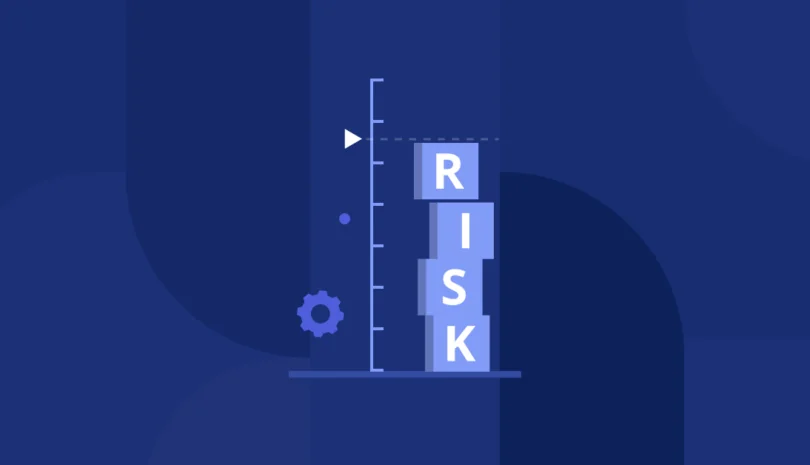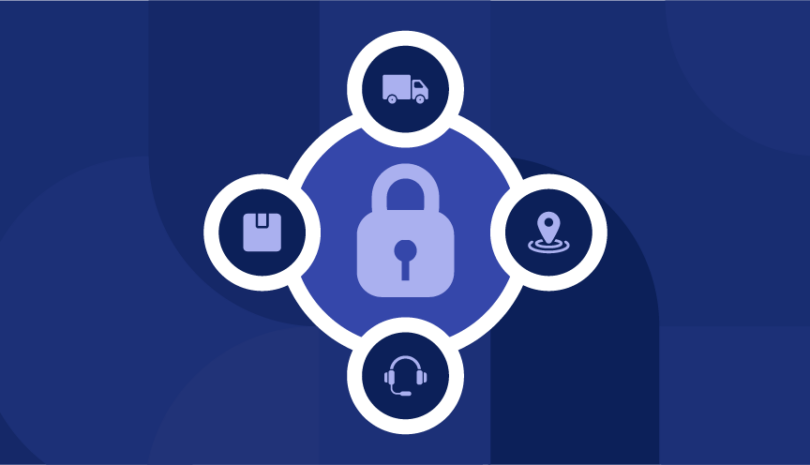Modern supply chains are increasingly digital, distributed, and dependent on third parties, making them more vulnerable than ever. A single failure, such as a vendor outage, data leak, or third-party cyberattack, can trigger a cascade of operational disruption, financial loss, and reputational damage.
For CISOs, this means shifting from traditional risk mitigation to a broader mandate: leading enterprise-wide resilience planning. It’s not enough to secure your systems; you must also prepare for incidents outside your control and ensure the business can continue to operate through them.
This blog offers a strategic guide for CISOs tasked with strengthening digital supply chain resilience. From mapping critical dependencies to integrating with business continuity planning, we’ll explore how security leaders can prepare for, withstand, and recover from third-party failures before they happen.
Why Supply Chain Failures Are a CISO Priority in 2025
As organizations lean further into cloud-first strategies and software-defined operations, their digital supply chains have become more complex and more exposed. The average enterprise now relies on hundreds, if not thousands, of third-party vendors for everything from infrastructure and SaaS to specialized services.
This growing interdependence has created fertile ground for cyber attackers. Recent high-profile breaches, like SolarWinds and MOVEit, have made it clear that a single weak link in the supply chain can compromise the entire ecosystem.
At the same time, regulatory bodies are raising the bar. Frameworks like the SEC’s incident disclosure rules, the EU’s Digital Operational Resilience Act (DORA), and NIS2 demand proof of third-party oversight and response preparedness.
Boards and executive teams are also paying attention. They’re expecting CISOs to not only manage cyber risk, but to ensure business continuity through vendor disruptions. In 2025, supply chain resilience isn’t a nice-to-have; it’s a core part of security leadership.
Identify Critical Dependencies to Prevent Supply Chain Failures
Not every vendor poses the same level of risk. To build true supply chain resilience, CISOs must start by identifying the vendors and fourth-party relationships that matter most.
Begin by mapping all external dependencies, including cloud providers, SaaS platforms, data processors, and strategic service partners. Then, assess each based on three key criteria: the sensitivity of data they handle, their access to internal systems, and the potential operational impact if they fail.
This prioritization enables more focused oversight, tailored due diligence, and faster incident response. In short, knowing where you’re vulnerable is the first step to protecting what matters.
How Vendor Resilience Affects Supply Chain Failures
A vendor’s security posture is only part of the equation; true resilience depends on how well they can detect, respond to, and recover from incidents. To reduce the risk of cascading failures, organizations must assess vendors beyond initial security questionnaires.
This means evaluating their business continuity and disaster recovery plans, incident response maturity, and cloud infrastructure redundancy. Do they have geographic failover? Can they maintain operations during a cyberattack or outage?
Use a combination of detailed questionnaires, penetration testing (where appropriate), and continuous external monitoring to validate resilience claims. The goal isn’t just to check a box, but rather to ensure your vendors can withstand disruptions that might otherwise impact your business.
Build Redundancy into the Ecosystem to Prevent Supply Chain Failures
Even the most resilient vendors can experience downtime. To stay operational during a supply chain disruption, organizations should design for redundancy.
Start by identifying where diversification is possible, such as using multiple cloud providers, alternate data processors, or backup service partners for mission-critical functions. When duplication isn’t feasible, implement failover plans or backup tools that can be activated quickly.
Additionally, build resilience into your contracts. Service-level agreements (SLAs) should clearly define uptime expectations, breach notification timelines, and response obligations. Redundancy isn’t just technical, it’s strategic, contractual, and essential for business continuity.
How Strengthening Response Coordination Prevents Supply Chain Failures
When a supply chain incident hits, response speed and clarity are critical. Delays caused by misaligned responsibilities or vague communication can turn a manageable issue into a full-blown crisis. That’s why CISOs must proactively define joint incident response (IR) plans with critical vendors.
These plans should outline shared response timelines, clear escalation paths, and designated points of contact on both sides. In the event of a breach or outage, everyone should know exactly what to do with no time wasted.
To ensure preparedness, conduct regular tabletop exercises that simulate real-world failures. Practicing with third parties helps validate response protocols and builds trust under pressure.
The Importance of Internal Communication
Supply chain resilience is both a technical challenge and an executive priority. CISOs must translate third-party risk into clear, actionable insights for internal stakeholders.
Start by building executive-ready reporting that highlights your third-party risk posture, including critical vendor dependencies and exposure points. Use real-world business impact scenarios to educate board members and senior leadership on what’s at stake.
Finally, align resilience KPIs, like vendor response time, redundancy coverage, and compliance readiness, with broader enterprise risk dashboards. When resilience metrics are integrated into company-wide planning, security becomes a business enabler, not just a technical function.
Common Mistakes That Can Lead to Supply Chain Failures
Too often, organizations treat supply chain failures as unlikely IT problems rather than business-critical risks. This mindset creates blind spots that can lead to serious consequences when a vendor goes down or is breached.
One common mistake is relying exclusively on static security questionnaires to assess vendor risk. While they’re a good starting point, they don’t capture evolving threats or test a vendor’s actual resilience.
Another pitfall is failing to integrate third-party vendors into your broader incident response (IR) plans. If your internal teams are ready but your vendors aren’t, recovery efforts will falter.
CISOs must also avoid under-communicating supply chain risks to executive leadership. Without a clear understanding of business exposure, the organization may overlook the need for resilience investment.
Building supply chain resilience requires ongoing visibility, coordination, and communication, not one-time checks.
Tools and Frameworks That Support Supply Chain Failure Resilience
Modern resilience planning requires the right tools and standards to stay ahead of evolving risks. Frameworks like NIST Cybersecurity Framework (CSF) 2.0 and ISO 27036 guide managing third-party and supply chain risks as part of a broader security strategy.
Automation platforms like Panorays help operationalize this guidance. With capabilities like continuous monitoring, threat intelligence integration, and external attack surface management, organizations can detect early warning signs before disruptions escalate.
These tools also support dependency mapping and vendor tiering, key for prioritizing which suppliers need deeper oversight. By combining strategic frameworks with modern platforms, CISOs can build supply chains that are not just compliant but resilient.
Build Resilience to Prevent Supply Chain Failures
Supply chain resilience can no longer be a secondary concern; it’s a core pillar of modern cybersecurity strategy. As organizations become more reliant on third-party vendors and digital integrations, the risks tied to external failures grow in both frequency and impact.
CISOs are now expected to go beyond technical defenses. They must lead cross-functional efforts that align cybersecurity, business continuity, procurement, legal, and executive leadership around a shared goal: ensuring the organization can withstand and recover from supply chain disruptions.
That’s where Panorays comes in. Our platform helps CISOs gain complete visibility into third-party risk, automate vendor assessments, monitor for emerging threats, and prioritize the most critical dependencies. With Panorays, security teams can move from reactive risk management to proactive resilience planning, without slowing the pace of business.
Building supply chain resilience isn’t just about preventing breaches. It’s about protecting operational continuity, customer trust, and long-term business value. Book a demo with Panorays to start strengthening your supply chain resilience today.
Supply Chain Failure FAQs
-
Supply chain failures can stem from cyberattacks, vendor outages, data breaches, compliance violations, or natural disasters that impact a vendor’s ability to operate. In today’s digital landscape, even a small third-party disruption can create a ripple effect across your organization.
-
Major incidents like the SolarWinds breach, MOVEit vulnerability, and Kaseya ransomware attack exposed how third-party security gaps can compromise thousands of downstream organizations. These events revealed the urgent need for vendor visibility and response readiness.
-
A single vendor failure can result in system downtime, data exposure, missed SLAs, reputational damage, and even regulatory penalties. For many businesses, third-party risks are now as impactful as internal ones.
-
Yes. Regulations like DORA, NIS2, GDPR, and the SEC’s cybersecurity disclosure rules increasingly require proof of third-party oversight, due diligence, and incident response preparedness. Supply chain failures without proper governance can lead to compliance violations and legal exposure.



